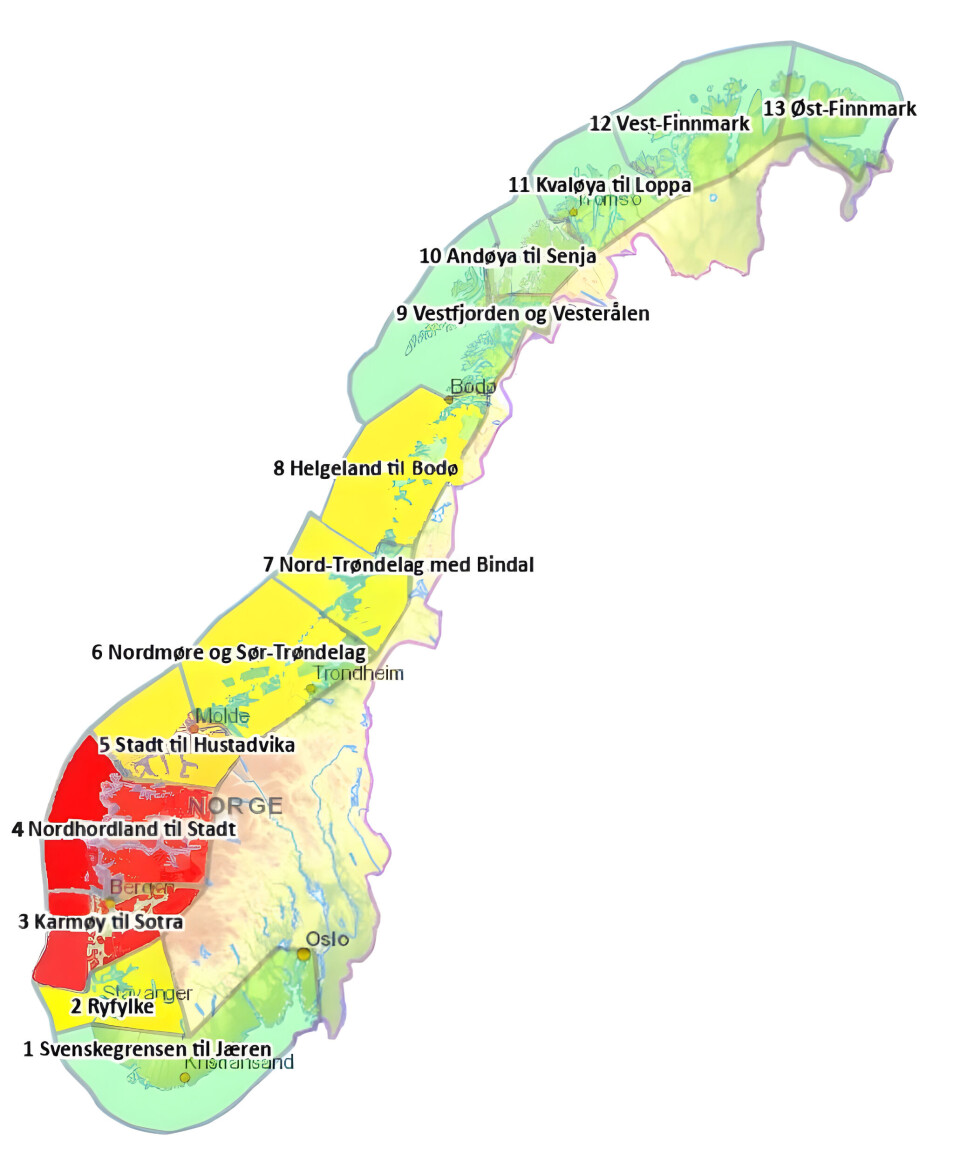
Norway allows more salmonid production in north and far south
But two areas get hammered again despite lower lice levels
One of Norway’s 13 salmonid farming production areas (POs) has been hit with an order to reduce capacity for the THIRD time in a row, while its neighbouring area has been handed a second consecutive reduction.
PO4 (Nordhordland to Stadt) and PO3 (Karmøy to Sotra) have been given a “red light” for the third and second times respectively under the government’s traffic light system, which means salmonid farmers in those areas must again reduce production by 6%.
The traffic light colours, designated every two years, have been set based on scientific assessments of the effect of salmon lice on wild salmon for the years 2022 and 2023. Six of the production areas – one in the south, five in the north – have been given the green light. This means that farmers will have the opportunity to increase production in these areas. Five areas received a yellow light (no change).

“The new colouring in the traffic light system will ensure more jobs, more Norwegian food production, greater value creation and increased export income for Norway,” said fisheries and oceans minister Cecilie Myrseth in a press release.
Facilitating growth
“We continue to facilitate growth in the areas where the effect of salmon lice on wild salmon is acceptable. It also means that production capacity is kept unchanged in several areas, and that we reduce production capacity in areas with unacceptable impacts.
“It worries me that the impact from salmon lice is increasing in several areas, and that this is happening despite the aim being to reduce the impact. If the industry is to grow, it will have to make changes to reduce the discharge of salmon lice larvae from the farms.”
The production areas receive an automatic traffic light designation if the experts’ assessment of the environmental impact is the same in both years. For two of the areas, the experts’ assessment was different in 2022 and 2023. This applied to PO4 and Helgeland to Bodø (PO8).
More thorough assessments were made in these areas based on the overall environmental condition where, among other things, the physical conditions in the sea, the condition of the wild salmon according to the quality standard and the conditions for the sea trout were assessed.
The seven-year hitch
New this year is an assessment of particularly important and vulnerable salmon stocks, and whether they are more affected than other stocks in the same area. It has also been assessed how wild salmon have been affected by salmon lice over the past seven years and what this means for wild salmon populations as a whole. At the same time, farming provides income, both for business and the public sector. Decisions about traffic light colours therefore involve a balancing of various considerations, stated the government.
“In both areas that have been separately assessed, I have placed the greatest emphasis on the condition of wild salmon. In PO4, I have also emphasised the impact of salmon lice on wild salmon over time and the need to reduce this burden. In PO8, it has been important that we do not increase the risk of unacceptable impact, and therefore do not now offer growth in this area,” said Myrseth.
Record low lice level
Nils Tore Karstensen, of E. Karstensen Fish Farming, told Fish Farming Expert’s Norwegian sister site Kyst.no that he is very surprised and disappointed by the red traffic light for PO4.
“We are proud of the work done by the industry here in Western Norway in keeping lice numbers at a record low level,” he said.
Karstensen is clear that farmers thought they would avoid a capacity cut in PO4 this time.
“Now that we have a reduction, we have to plan for a lower production. But we are primarily concerned about the suppliers, the ability to invest and the development of the industry here in our area,” he said.
He added that a third reduction in the production area will be a “slap in the face” for everyone who wants development.





















































